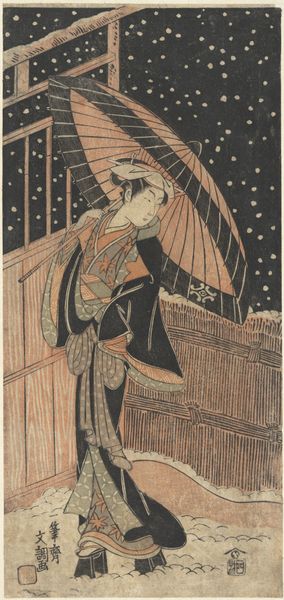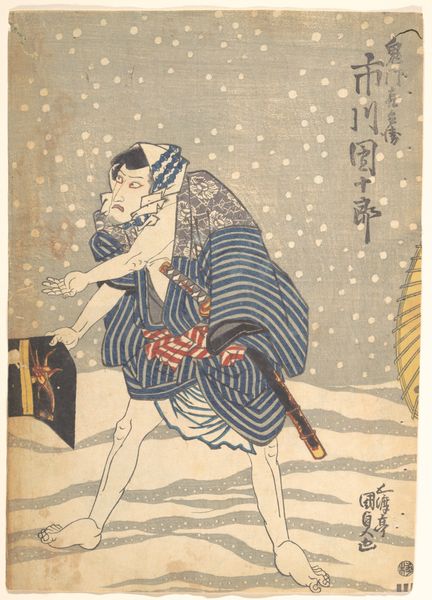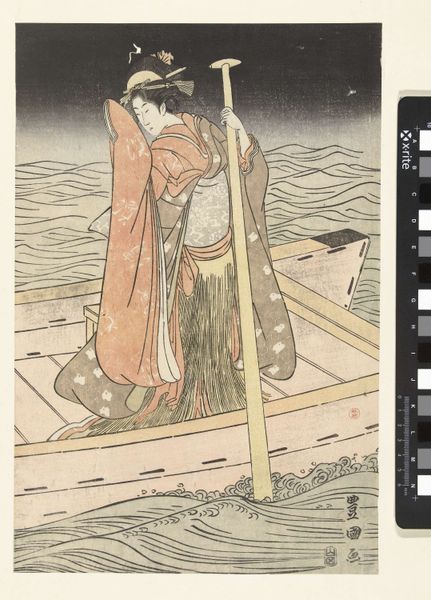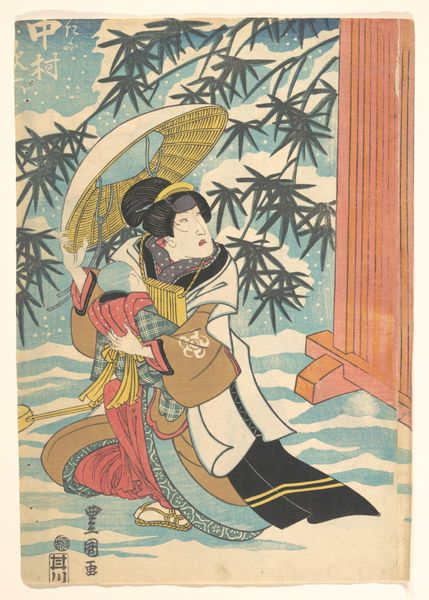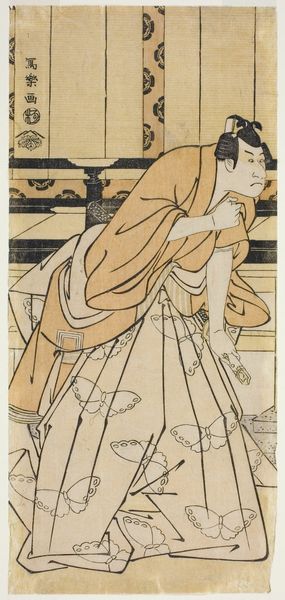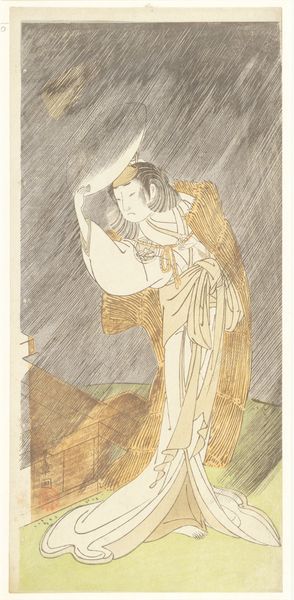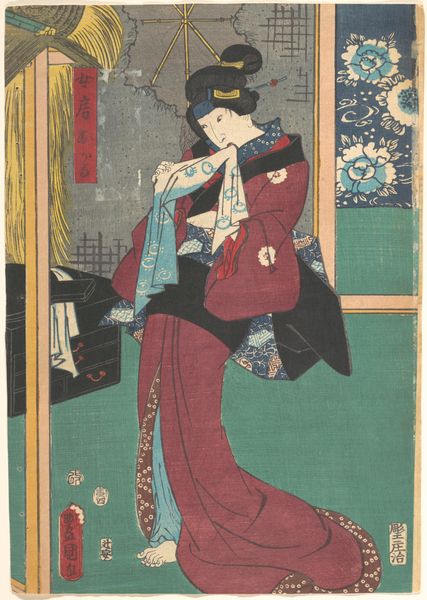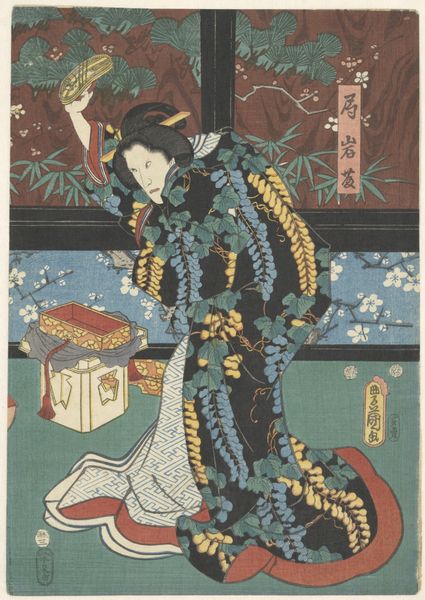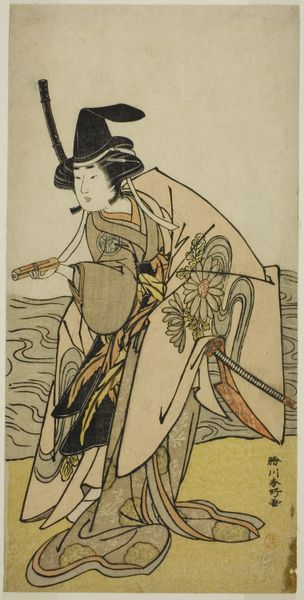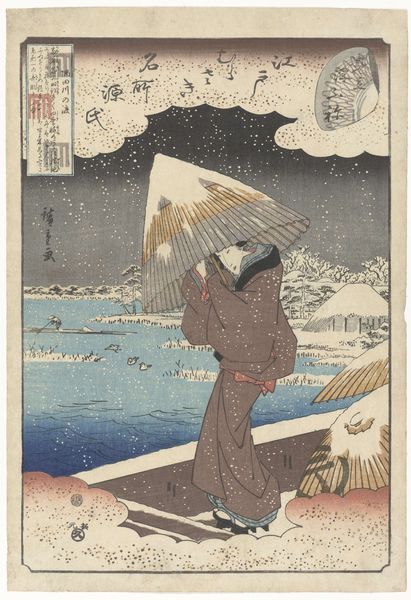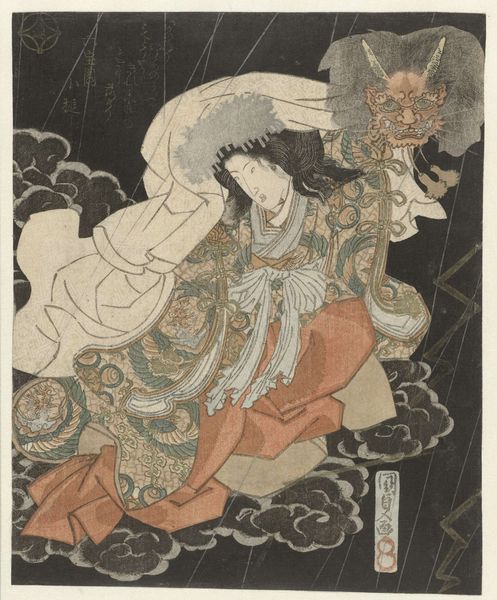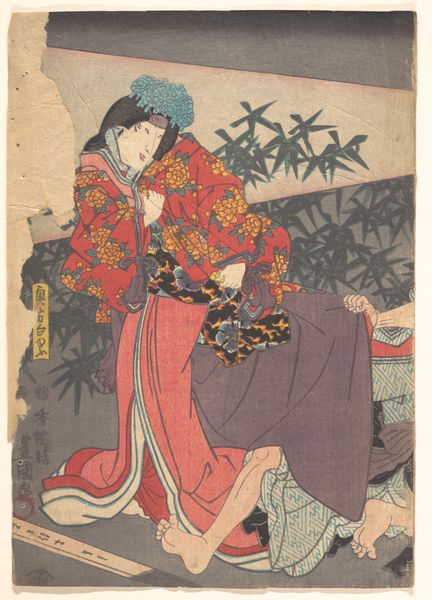
Sano Crossing at Miwagasaki (Miwagasaki Sano no watari) c. 1760s
0:00
0:00
print, woodblock-print
# print
#
asian-art
#
landscape
#
ukiyo-e
#
japan
#
figuration
#
woodblock-print
Dimensions: 31.3 × 14.2 cm (12 5/16 × 5 9/16 in.)
Copyright: Public Domain
Curator: Let’s turn our attention to this evocative woodblock print, “Sano Crossing at Miwagasaki,” created by Suzuki Harunobu around the 1760s. It’s part of the ukiyo-e tradition, capturing scenes from everyday life. Editor: Ah, I love the hush of this piece! It's mostly grays and whites, almost monochromatic. It makes me feel like I’m standing right there in that snowy scene, a silent observer. Brrr! Curator: The dominant palette reflects a technical choice and perhaps a societal value. Woodblock prints from this period could reproduce many colors, but in "Sano Crossing", Harunobu favors delicate tones to convey the quiet dignity of labor in the premodern Japanese landscape. It speaks to a slower pace of life and perhaps hints at social strata: observe the rider and those who are walking alongside the animal. Editor: Right, the hierarchy is implicit. But for me, it's more the dreamy, almost blurry quality that gets me. The figures feel ephemeral, like they're barely there, swallowed up by the immensity of the snow. Look at the bridge dissolving into the river… Are those snowflakes or ink spots deliberately put there? I get lost wondering. Curator: It’s a meticulous craft that renders the falling snow – both the visible snow and the implied weight of the atmosphere – contributing to the viewer's embodied experience. I find it equally compelling how this imagery entered wider circulation through the art market. Prints like these were not confined to elite patrons; they played a crucial role in democratizing art and culture in Edo-period Japan. Editor: True. It's easy to forget the accessibility factor! Knowing this circulated among many people adds a cool dimension. And there is something subtly cheeky in rendering it so painterly despite being, in the end, mass-produced. Now that I think of it, a print makes that particular form of transient landscape immortal in an odd way. Curator: I’d say your interpretation wonderfully balances the art historical analysis with the appreciation of Harunobu’s technique. That tension – the ethereal quality versus the grounded realities of labor and commerce – offers an insightful reading of this enduring artwork. Editor: Well, it’s a wintry piece that has thawed my brain in unexpected ways.
Comments
No comments
Be the first to comment and join the conversation on the ultimate creative platform.
